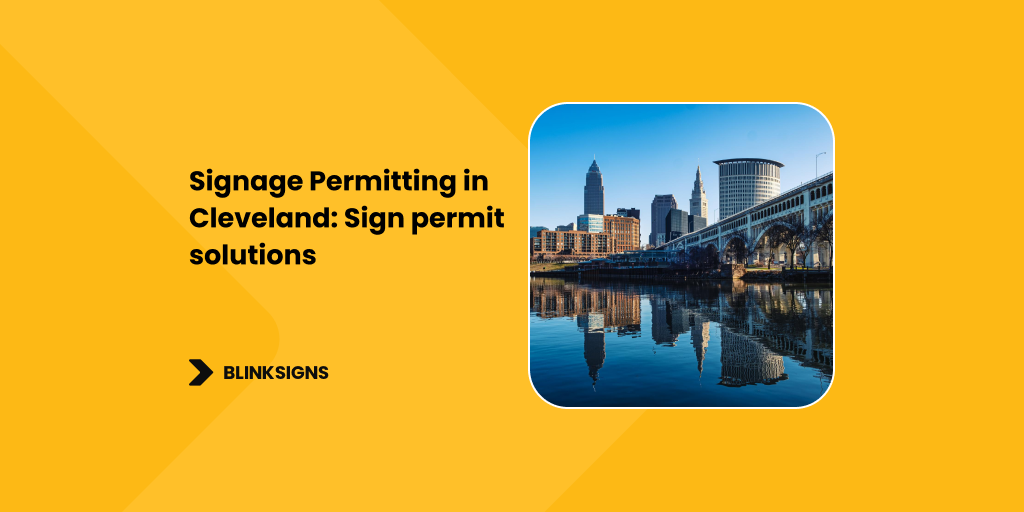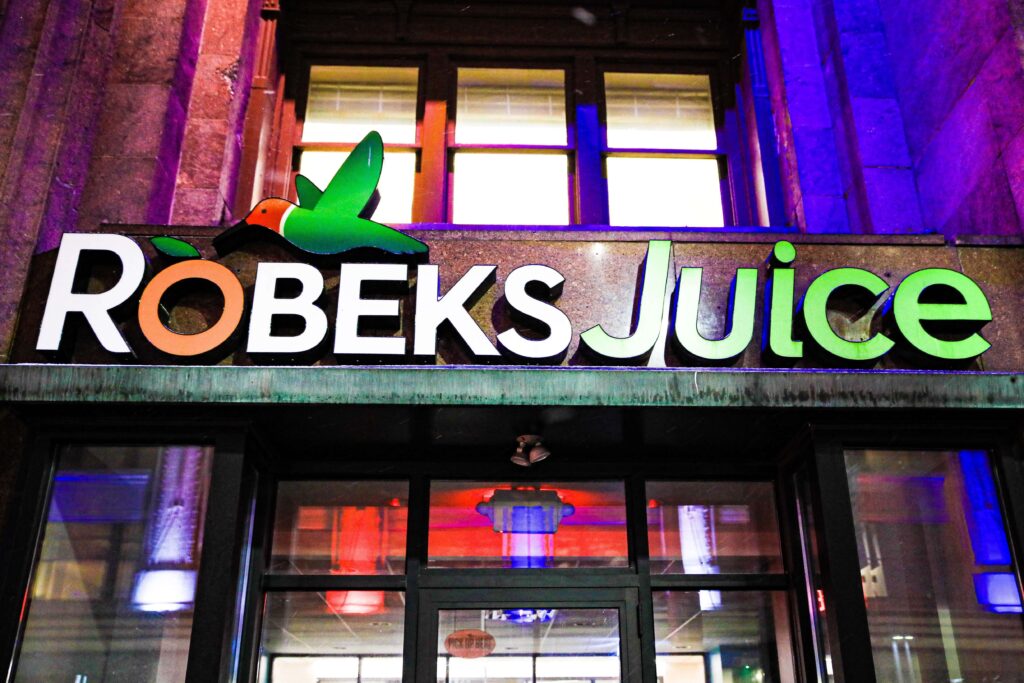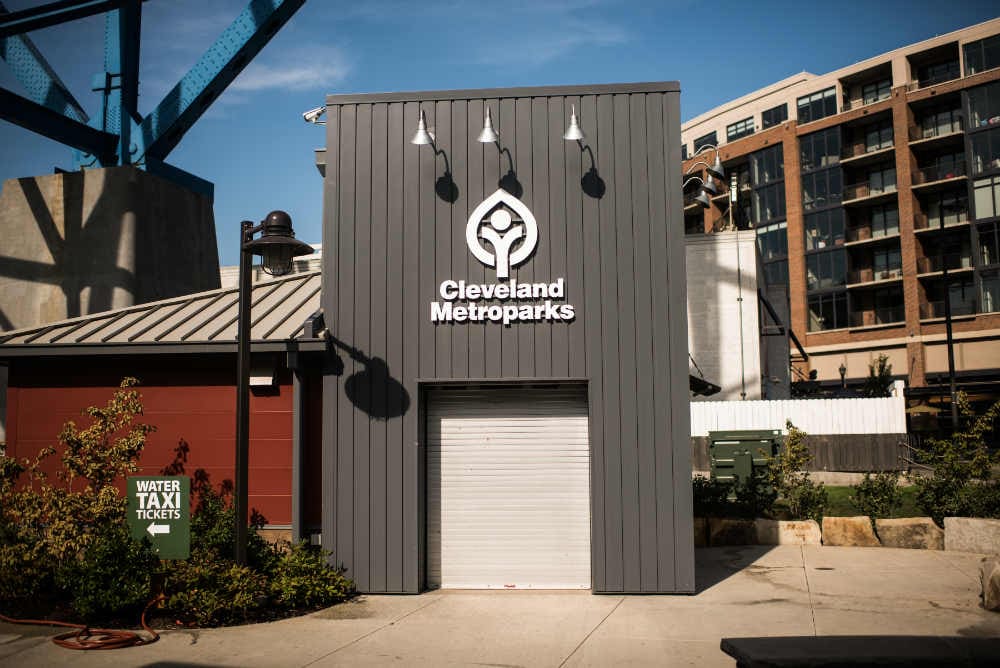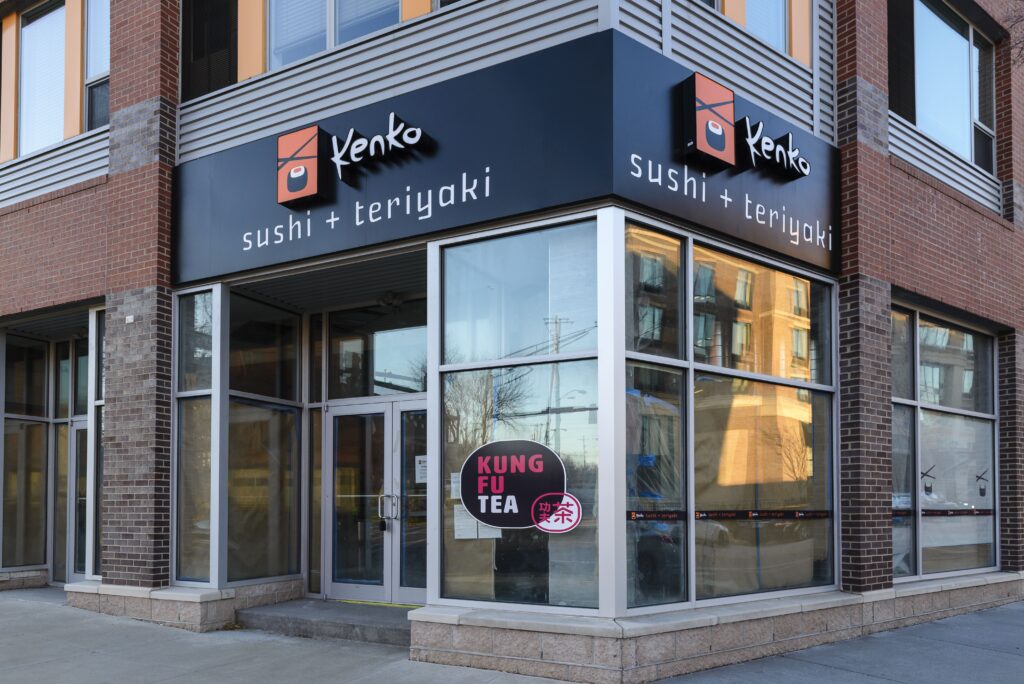
Signage Permitting in Cleveland: Complete sign permit solutions
Signage is crucial to business visibility and branding, especially in a vibrant city like Cleveland. However, compliance with local regulations is essential to avoid penalties and ensure signage contributes to the town’s aesthetics. The Cleveland Department of Building and Housing and the Cleveland City Planning Commission oversees the permitting process by ensuring signage meets zoning, environmental, and safety standards. Understanding these complex processes of signage permitting makes compliance with local, state, and federal regulations more accessible.
Key Regulatory Bodies and Their Roles
City of Cleveland Department of Building and Housing
The department oversees the issuance of sign permits, checks for compliance with local building and safety codes, and reviews permit applications to ensure all signs adhere to structural, safety, and zoning requirements. Businesses can avoid potential legal problems and keep the public safe by complying with the department’s requirements.
Cleveland City Planning Commission
The Planning Commission oversees the approval of signage designs, particularly within designated Design Review Districts. This ensures that signage aligns with Cleveland’s zoning and aesthetic goals, maintaining the city’s visual integrity and neighbourhood character. By coordinating with this commission, businesses can expedite the permitting process.
Board of Zoning Appeals
When a business’s proposed signage does not conform to standard zoning regulations, the Board of Zoning Appeals reviews and decides on variance requests. This board also handles appeals for permit denials, offering businesses an opportunity to justify unique signage needs.
Code Enforcement Officers
These officers conduct routine and surprise inspections to confirm that installed signage meets all applicable code requirements. Their role is essential for ensuring ongoing compliance and addressing potential violations promptly.
Overview of Cleveland’s Sign Codes and Ordinances
Cleveland Codified Ordinances
Key chapters, such as Chapter 350 (Sign Regulations) and Chapter 3113 (Outdoor Signs and Displays), outline the rules businesses must follow. These ordinances regulate various aspects of signage, including size, height, illumination, and the types of signs permitted in different areas. Compliance is vital to avoid fines or removal orders and maintain the integrity of business operations.
Municipal Zoning Code
The Municipal Zoning Code establishes where specific types of signage are permitted. For instance, regulations in residential areas may be stricter than in commercial or industrial zones, impacting allowable sign size, height, and placement.
Historic Preservation Codes
Additional regulations in historic districts like Ohio City and Tremont aim to preserve the neighbourhood’s architectural character. Signage in these areas must meet specific design criteria to ensure it complements the historical context. Failure to comply can result in permit denials or required alterations.
Types of Signage and Their Specific Requirements
On-Premise vs. Off-Premise Signs
On-premise signs are located on the business’s property and advertise products or services offered at that location. Examples include wall signs, monument signs, and awning signs. These signs are subject to zoning ordinances that regulate their size, height, and placement to prevent obstruction and enhance visibility.

Robeks juice signage
Off-premise signs, such as billboards, advertise businesses or services not on the same property as the sign. These signs are more stringently regulated by local ordinances and state-level entities like the FDOT, which oversees spacing, illumination, and structural safety, particularly along major roads and highways.
Common Types of Signage
Types of Signage and Their Specific Requirements in Cleveland
| Type of Signage | Description | Key Regulations in Cleveland | Common Uses |
| Wall Signs | Signs attached directly to building exteriors, displaying business names or information. | Must comply with the Cleveland Codified Ordinances for size, projection, and placement. Zoning codes may limit the total sign area based on building frontage. | It is commonly used for storefronts, office buildings, and retail shops. |
| Monument Signs | Ground-level, freestanding signs that sit at eye level and provide clear information. | Must meet setback regulations and height restrictions as specified in city zoning codes. Structural integrity and materials must align with safety codes. | Often seen at business complexes, corporate headquarters, and institutional entrances. |
| Pylon Signs | Elevated, freestanding signs supported by poles are often visible from greater distances. | Height, spacing, and setback regulations are enforced to maintain safety and avoid visual clutter. Permits must include detailed plans for structural support. | Used by shopping centres, gas stations, and large commercial properties. |
| Electronic Message Centers (EMCs) | Digital signs with changing content, such as LED displays. | Must adhere to brightness, animation, and frequency regulations to prevent driver distraction. Specific zoning rules apply for placement in residential areas. | Famous for retail promotions, event notifications, and public service announcements. |
| Temporary Signs | Non-permanent signs, such as banners and A-frames, are used for limited-time promotions. | Permits are time-bound with specific size and placement guidelines and prohibited from obstructing pedestrian pathways or causing visual clutter. | Used for special sales, grand openings, and community events. |
| Awning and Canopy Signs | Signs integrated with awnings or canopies, combining shade with advertisement. | Must comply with clearance and projection standards. Historic district regulations may require design approvals for aesthetic consistency. | It is frequently found in restaurants, boutiques, and cafes. |
| Projecting Signs | Signs that extend outward from the building facade, perpendicular to the wall. | Subject to strict clearance and projection limits to ensure pedestrian safety. Often requires additional permits in areas with high foot traffic. | Common in downtown areas and entertainment districts. |
| Billboards | Large off-premise signs advertising businesses or services not located on the property. | Regulated heavily under Cleveland’s ordinances and FDOT guidelines, especially near highways and residential zones. Spacing and size limitations apply. | Placed along highways, major roads, and urban centres. |
Permitting Processes in Cleveland
Understanding and following the permitting process in Cleveland is essential to ensure compliance with local regulations and avoid potential setbacks. The following steps outline how to navigate the process effectively:
- Application Preparation: Gather all necessary documents, such as site plans, elevation drawings, and detailed descriptions of the sign’s specifications, including dimensions, materials, and illumination features. For illuminated signs, ensure an electrical permit is prepared.
- Submission of Application: Submit your completed application to the Cleveland Department of Building and Housing or the Cleveland City Planning Commission. Ensure that all required forms are filled accurately to prevent processing delays.
- Initial Plan Review: City officials thoroughly review the submitted application to ensure compliance with local zoning codes, Cleveland Codified Ordinances, and safety standards. The review process may include feedback from the Design Review Committee, especially for signage in specific districts.
- Approval Timeline: Approval times can vary depending on the type and complexity of the signage. Simple signs like wall signs may be approved within a few weeks, while more complex structures like Electronic Message Centers (EMCs) or billboards could take longer. Businesses should initiate the process early to plan for potential delays.
- Inspections and Compliance Checks: After plan approval, an inspection is conducted to verify that the installation aligns with the approved plans. Inspectors will review the structural integrity, illumination, and placement to ensure the sign meets the Cleveland Building Code requirements and other applicable standards.
- Permit Issuance: A permit is issued once the inspection is passed, granting legal authorization to install the sign. This step solidifies compliance with local safety, zoning, and environmental regulations.
- Special Conditions for Historic and Residential Areas: Signs in Cleveland’s historic districts or residential zones may require additional design reviews and community board approvals. These reviews focus on maintaining the neighbourhood’s character and aesthetic.
- Ongoing Compliance and Renewals: Businesses must be aware of expiration dates for temporary signs or signage that require periodic renewal and submit renewal applications as needed. Routine inspections may also be necessary to ensure continued compliance with city codes.
BlinkSigns offers comprehensive support through every step of this permitting process, helping businesses navigate regulations smoothly and ensuring their signage meets all local standards.
Measurements and Specifications for Sign Compliance

Cleveland Metroparks Signgae
Sign Area and Height Restrictions
Local zoning codes determine the area and height of signage. In commercial zones, larger signs are typically permitted, while residential areas have stricter size limitations to maintain neighbourhood aesthetics.
Setback and Clearance Requirements
Signs must maintain specific setbacks from roads and neighbouring properties. These setbacks ensure that signs do not obstruct drivers’ or pedestrians’ visibility and comply with safety regulations.
Wind Load and Structural Integrity
Given Cleveland’s variable weather conditions, signs must meet wind load requirements to withstand high winds and severe weather. Structural checks ensure the sign’s stability, preventing potential hazards.
Zoning and Location-Based Regulations
Commercial, Industrial, and Residential Zones
Each zoning category has distinct regulations impacting permissible signage. Commercial zones often permit more prominent signs, while residential zones have stricter guidelines to prevent visual clutter.
Historic Districts
Signage in historic districts like Ohio City and Tremont must align with architectural preservation efforts. These signs often require design reviews to ensure they complement the historic aesthetic and meet additional local requirements.
Right-of-Way Areas
Regulations for signage in right-of-way areas ensure signs do not impede traffic or pedestrian movement. Compliance with local and state standards is crucial for safety and unobstructed public space use.
Environmental and Safety Standards
Light Pollution Regulations
Cleveland enforces regulations that control the brightness and orientation of illuminated signs to minimize light pollution, particularly near residential areas and parks. These measures protect the community’s quality of life and prevent excessive glare.
Sustainable and Eco-Friendly Practices
To align with Cleveland’s commitment to sustainability, many businesses are encouraged to use eco-friendly materials and energy-efficient lighting solutions. Adopting these practices not only aids compliance but also enhances a business’s reputation as environmentally responsible.
Variances and Appeals Process
When a Variance is Necessary
A variance may be required when a proposed sign exceeds standard zoning limitations. This could include signs that surpass height or size restrictions or signs placed in unique locations where standard regulations do not apply.
Applying for a Variance
The process involves submitting detailed documentation and justification for the requested exception. This may include demonstrating how the sign benefits the public or explaining unique site constraints.
Appeals for Denied Permits
Businesses can appeal through the Board of Zoning Appeals in case of a denied application. This process requires presenting revised plans or additional documentation to demonstrate compliance with the underlying intent of the regulations.
Maintenance and Permit Renewal Requirements

Keno Sushi Signage
Ongoing Maintenance
Maintaining signage compliance in Cleveland involves regular upkeep to meet safety and aesthetic standards. This is especially critical for illuminated signs, which may require frequent checks on electrical components and lighting.
Ensuring the structural integrity of signs, including sign supports and sign cabinets, helps prevent hazards. This is particularly important for freestanding signs, such as monuments and pylons, which are exposed to wind and other environmental factors.
Permit Renewals
Temporary signs often require permit renewals. The renewal process typically involves resubmitting updated site plans and compliance documents. Regular inspections may also be needed to confirm that the signage remains within the approved specifications.
For permanent signs, businesses should keep track of any changes in zoning or city regulations that might necessitate updates or permit renewals. Renewal processes may involve further review by zoning boards in historic or residential zones to ensure continued alignment with community standards.
Financial Considerations for Signage Permitting in Cleveland
Permit Fees
Sign permit fees vary depending on the type, size, and location. More prominent signs or those with complex features like illumination generally incur higher costs. Understanding the fee structure helps businesses budget effectively and avoid unexpected expenses.
Additional Costs
Beyond permit fees, businesses should anticipate additional costs, such as inspection fees, renewal fees, and potential penalties for non-compliance. Some municipalities may require bond payments or insurance to cover sign installation and maintenance liability. BlinkSigns provides comprehensive guidance on navigating these financial aspects to ensure full budget preparedness.
FAQs for Signage Permitting in Cleveland
- What is the process for obtaining a signage permit in Cleveland?
To obtain a signage permit, detailed plans must be submitted to the Cleveland Building Department, the plan must be reviewed, and inspections must be completed before approval.
- Do I need a permit for temporary signs in Cleveland?
Yes, temporary signs often require permits and must meet specific regulations regarding duration, size, and placement to remain compliant.
- How long does the signage permitting process take in Cleveland?
The process can take anywhere from a few weeks for standard wall signs to several months for complex digital signs or those in historic districts.
- What are the common signage restrictions in Cleveland?
Cleveland restricts signs’ height, size, and brightness to maintain city aesthetics, especially near residential areas and historic zones.
- Are there special rules for illuminated signs in Cleveland?
Illuminated signs must follow brightness, placement, and operating hours regulations to avoid light pollution and driver distraction.
- Can I apply for a variance if my sign doesn’t meet standard regulations?
Yes, you can apply for a variance, which requires submitting additional documentation and justifying the need for deviations from standard codes.
- What types of signs are prohibited in Cleveland?
Prohibited signs include flashing, excessively bright digital billboards and signs obstructing visibility or disrupting public safety.
- Are there additional steps for signage in historic districts?
Yes, signage in historic districts requires approval from local design review boards to ensure compliance with aesthetic and preservation standards.
- Do I need an electrical permit for illuminated signs?
If your signage includes electrical components, an additional electrical permit is required to meet safety codes.
- What happens if my signage does not comply with regulations?
Non-compliance can lead to fines, mandatory removal, and potential disruptions to business operations. Regular inspections help maintain compliance.
Conclusion
Successfully navigating the complexities of signage permitting in Cleveland is essential for maintaining compliance and maximizing business impact. Adhering to local codes and regulations safeguards against fines and legal issues and supports a strong community relationship by contributing to a cohesive cityscape. Businesses can confidently install signage that enhances their visibility and brand reputation by understanding the detailed requirements set by local governing bodies such as the Cleveland City Planning Commission and the Department of Building and Housing.
The involvement of professionals like BlinkSigns streamlines the process, ensuring that every step—from application submission to final approval—meets the standards of safety, design, and environmental compliance. Investing time and resources into proper permitting practices fosters business growth and aligns with Cleveland’s focus on sustainable and responsible urban development. For further inquiries, contact us at Sales@blinksigns.com.